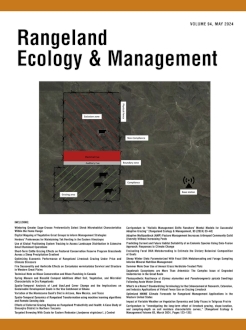Livestock grazing is the most economically important use of rangeland ecosystems in many parts of the world. An extensive body of literature has investigated livestock grazing plans that are economically optimal or ecologically sustainable. This paper's contribution to the literature is development and application of an empirical mathematical programming model for optimizing the economic performance of livestock grazing on rangeland ecosystems for a wide array of vegetation biomes, forage productivity levels, and economic conditions. The model is calibrated to replicate historically observed data for select counties, in which predictions of the income optimization model match available data on county-wide forage, animal performance, grazing pressure, stocking level, and net income. Results show how climate stress and economic conditions affect the economically optimized choice of stocking rates and net income for 18 observed conditions and 126 potential conditions for six counties in the Intermountain West and Mediterranean western US. While findings show optimized outcomes for a large set of conditions in that region, the methods developed here have potential application to rangeland ecosystems internationally wherever data required by the model can be secured. The modeling results provide insight and utility for ranchers, scientists, and policymakers who seek economically optimal rangeland ecosystem outcomes.
BioOne.org will be down briefly for maintenance on 12 February 2025 between 18:00-21:00 Pacific Time US. We apologize for any inconvenience.
How to translate text using browser tools
17 May 2024
Optimizing Economic Performance of Rangeland Livestock Grazing under Price and Climate Stressors
Shanelle Trail,
Maryfrances Miller,
Frank A. Ward
ACCESS THE FULL ARTICLE

Rangeland Ecology and Management
Vol. 94 • No. 1
May 2024
Vol. 94 • No. 1
May 2024
Adaptation
Climate
drought
economics
policy
rangelands




